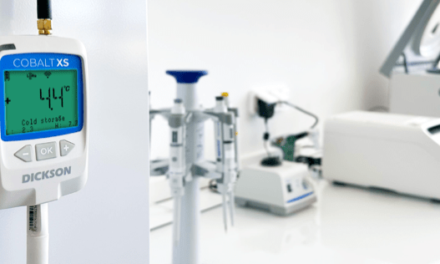Fujifilm Sonosite CEO Rich Fabian recently sat down with 24×7 Magazine to discuss how and why original equipment manufacturers (OEMs) should approach medical device service and why HTM professionals should never be left to their “own devices.” The conversation has been edited for space and clarity.
24×7 Magazine: During our initial conversation, you mentioned the rather resonant phrase of med-tech customers being “left to their own devices.” Can you please elaborate on that?
Rich Fabian: Well, it’s a bit of a turn of a phrase in a different context—this one literally meaning that it’s important not to be stuck with an expensive, durable medical device where the OEM is weak on service, parts replacement, or warranty and they can’t, for instance, quickly provide loaners when equipment is being repaired.
The other piece of this is ensuring that the OEM is solid enough that they don’t leave you with an orphan technology because the company, or their successor, is no longer able or willing to support that model or line, and/or high-quality OEM replacement parts are not available. We’ve all heard horror stories about that kind of situation.
24×7: Downtime is often talked about as the outcome of such challenges, and that can be just the beginning of a spiral, correct?
Fabian: Absolutely. Downtime leads to a cascade of issues that have significant ramifications. Chances are pretty good that you won’t discover the failure until you are using the device for a procedure or diagnosis. Imagine an ultrasound system malfunctioning during interoperative surgery or in the placement of a regional nerve block. Then, there are the additional problems of monetary loss from lower reimbursements, the headache, and costs of rescheduling—not to mention how that impacts patient flow and staffing availability.
This also can lead to things like lower patient satisfaction scores, paying idle staff, damaged reputations, and the development of process bottlenecks that spell real trouble for providers. If device companies think that building a strong service organization is expensive, they should consider the costs of a compromised reputation for both them and their customers.
24×7: Getting down to brass tack numbers, what kind of revenue losses can be expected when an ultrasound machine goes down?
Fabian: When medical devices fail or need servicing, healthcare facilities lose revenue. According to research, an MRI machine can be out of service for 30 to 60 hours each year. At an average cost of $2,000 per scan and one hour per scan, healthcare facilities can lose between $60,000 and $120,000 per year just on a single MRI machine. It’s also worth thinking about the non-financial costs of downtime as well. Take three of the environments in which point-of-care ultrasound is used: the ER, the OR and the ICU. Performance and reliability are a matter of patient safety in these settings.
24×7: Let’s touch a bit more on patient satisfaction. Is there a direct correlation between patient satisfaction and financial performance?
Fabian: Yes, according to a 2016 report by Deloitte, higher patient experience ratings are clearly associated with higher hospital profitability. In fact, those with excellent patient ratings have a net margin of 4.7% compared to 1.8% for hospitals with low patient ratings. There is no question that patients get upset when they have to wait or be rescheduled—and a medical device should never be the reason for a negative patient experience.
24×7: We know that Fujifilm Sonosite has a real focus on durability. How important is this in the whole service discussion?
Fabian: Our company’s first product was developed to provide durable and rugged battlefield ultrasound systems to the U.S. military. Ever since durability and reliability have been priorities for us because our equipment is so mission-critical, especially at the point-of-care, whether in an ER, OR, NICU, ICU, or elsewhere. So, for us, good service really starts with building a machine healthcare providers can rely on. This commitment allows us to confidently provide exceptionally strong warranties, which is a huge part of providing world-class customer service.
24×7: A cynical view is that medical device companies will just make quality customer service a slogan, rather than truly baking a service-oriented culture into the organization. How does Fujifilm Sonosite respond to this?
Fabian: Well, that would be a short-lived company because there is no shortcut to providing high-quality customer service. It can’t be rhetoric-based. For Fujifilm Sonosite, this springs out of our core values: “own it” and “act with integrity.” If something goes wrong with one of our devices, we are committed to owning it and doing the right thing. For example, we have a 98% success rate in getting loaner devices to customers within 24 hours. That includes global customers. You don’t achieve milestones like that unless service is part of the company’s DNA—which, in our industry. it absolutely needs to be.
24×7: In closing, what’s on the medical device customer service horizon?
Fabian: Certainly, remote equipment monitoring is going to become an increasingly important way to receive rapid information about system faults, along with anticipating maintenance needs and providing remote repairs and upgrades. This can help reduce expenses and downtime. Beyond that, two of Fujifilm’s other values are “go boldy” and “be curious,” so customers can be assured that we’re always looking for new and innovative ways meet their equipment service needs.




